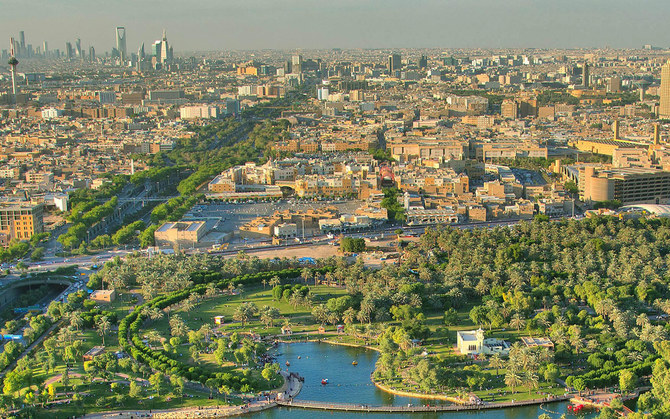AUTHOR: Niteesh Shanbog Research Associate, IIT Delhi holds a Master of Public Policy (MPP) from the Indian Institute of Technology (IIT), Delhi as well as a Master’s and Bachelor’s degree in Electrical Engineering from PES University and BMSIT, Bengaluru. Niteesh commenced his professional journey as a Junior Research Fellow at the Central Electronics Engineering Research Institute (CSIR CEERI). His academic and professional pursuits reflect his keen interest in the power sector, particularly the evolving areas of energy transition, sustainability, and climate change. Niteesh has made significant contributions to projects focusing on energy and capacity markets, the design of indigenous water treatment plants, and modeling the impact of droughts, demonstrating his commitment to addressing these critical global issues.

Petroleum and related sectors are the backbone of Saudi Arabia’s economy. With almost one-fifth of the world’s known reserves, Saudi Arabia leads the world in terms of oil reserves. The discovery of oil completely transformed Saudi Arabia’s economy. Even though oil was discovered in 1938, until the close of the second world war, oil production was slowed. To fulfill the rising postwar demand, the Ras Tanura refinery was established in 1945, and the oil sector quickly expanded. Since the 1970s, electricity production has expanded quickly. Power generation was initially decentralized but gradually became centralized under state supervision in the second half of the 20th century. A centralized state entity was given control over all electricity production in 2000 to create a comprehensive national grid. The majority of the kingdom’s generators run on diesel and natural gas.
Saudi Arabia and other Gulf producers have been attempting to enter the nuclear and renewable energy industries. They are driven by multiple motivations to find oil substitutes. The Gulf oil-producing nations like Saudi Arabia, UAE, Kuwait, and Qatar have experienced demographic and economic growth over the past three decades, making them major energy users as well. Due to the extreme heat and scarcity of natural water supplies, it has become more necessary to use oil and gas to generate the electricity needed to cool buildings and desalinate seawater. More oil could be exported if renewable and nuclear energy sources took their place, also motivating the transition along with other sustainability concerns.
The Saudi Arabian energy revolution has made tremendous progress, spearheaded by the National Vision 2030. Saudi Vision 2030 is a strategic plan to diversify Saudi Arabia’s economy, lessen its reliance on oil, and expand public service areas like health, education, infrastructure, recreation, and tourism. Significant energy subsidy reforms have been implemented, and the renewable energy industry has experienced rapid growth. Due to the global decline in oil prices and demand and rising domestic energy demands, a quick transition away from oil is now necessary. Moreover, the energy transition efforts in the Gulf Cooperation Council region are influenced by several geopolitical and non-economic variables. Interestingly, the development of large-scale renewable energy projects and nuclear power is justified in the local media with non-economic arguments like status and modernity. Despite significant support from the ruling monarchy, the energy transition faces many challenges.
Technological Barriers to Transition
The pace of energy transition faces multiple technological challenges. While many technologies, such as batteries, solar power, and wind energy, have significantly lowered capital and operation costs and crossed key adoption barriers over the years, there are still severe technological gaps in other fields, such as industry and mobility. Additionally, along with new technologies, increasing the energy efficiency of existing systems and processes is necessary to achieve the goal of the energy transition. By lowering energy consumption and peak load, energy efficiency reduces the strain on national budgets, boosts the competitiveness of industries and services, creates jobs, reduces fuel poverty, and enhances system reliability. To make the transition to renewable energy cost-effective, extensive restoration of existing structures and electrification of end uses are required.
The terrain of Saudi Arabia presents several technological difficulties in producing electricity from renewable sources. First, because their yields are based on the weather, wind, and solar energy are intermittent. Maintaining the equilibrium between energy availability and demand for a reliable power system becomes more difficult due to this uncertainty. Finding practical and affordable techniques to lessen the effects of high heat, dust, and humidity on solar panels is another difficulty for Saudi Arabia. With prolonged exposure to high ambient temperature and sunlight, the electricity production and efficiency of the PV systems reduce drastically. The PV module’s surface is also covered in dust due to the desert-like conditions, inhibiting solar radiation from reaching the cells through the glass cover.
Moreover, Saudi Arabia has a sizable infrastructure that is wholly hydrocarbon-based and is constructed to last for another 30 to 50 years. Existing physical and human resources generate a very strong technological lock that makes setting up and using new technologies necessitate importing expertise.
Political Barriers to Transition
In Saudi Arabia, the energy transition issue is particularly confusing for an outsider. Profits from oil sales provide the kingdom with political stability and the monarchy with legitimacy. Climate change is practically an identity crisis issue for an absolute monarchy that depends entirely on oil export. Transitioning without ruining the oil market requires creativity. By committing to ”net-zero” emissions targets, they would have to reduce greenhouse gas emissions within their borders while continuing to export fossil fuels overseas. The kingdom has utilized oil revenue to preserve domestic stability, acquire regional clout, and increase influence. The funds have been used to strengthen the national army and give residents perks like well-paying public sector jobs, free health care, higher education, fuel subsidies, land for building homes, and lucrative pensions. Without this patronage system, the Gulf monarchs would be forced to relax their restrictions on political expression or become even more restrictive, which presents a substantial political obstacle to fully embracing the energy revolution.
The recent outbursts of Saudi Aramco’s chief, who criticized the goals of the energy transition as being unrealistic, demonstrate Saudi Arabia’s behavior of walking on a tightrope. Even though they have ambitious domestic transition plans, the monarchy calls for lowering the global emissions targets to a more ”realistic” target. Saudi has long argued that focusing on climate change at the expense of global energy security will worsen inflation and other economic problems, even though it benefits from any oil crisis.
The dominant trader mindset in traditional Arab society also stifles innovation because it places too much emphasis on immediate financial gain at the expense of possible long-term profits from Investment in research and development and entrepreneurship. There is a perception that notions like environmental policy integration are mainly relevant to domestic Western politics. Local businesses also demonstrate limited expertise in the renewable business area.
Policy Barriers to Transition
With decades of investing, Saudi Arabia has established its oil industry and infrastructure. Energy and services of all types are also substantially subsidized. The difficulty facing policymakers in this area is to create an environment that encourages the use of renewables. The subsidies provided significantly impact Saudi Arabia’s public finances, which are severely unsustainable over the long term. The government is currently feeling the aftereffects of this policy, and the Vision 2030 document’s suggestions are primarily aimed at taking some action to diversify and reform the Saudi economy.
Although transition plans are in place in Saudi Arabia, numerous obstacles and difficulties make it challenging to carry them out in a way that will allow planned goals to be met. Doing business in Saudi Arabia carries considerable risk, just like in other developing nations. To make using renewables cheaper, it needs to be competitive and, have negligible interference from regulators. The participation of the private sector acts as a strong stimulant to the transition plans. The private sector is consistently reluctant to invest in the Middle East, particularly in a nascent industry like renewables. From the perspective of the investor, the influence of politics and business appears to be the critical difficulty or even the root of the likely risk of market involvement.
Since Saudi Arabia’s current electricity rates are much below marginal costs, users have little financial motivation to conserve or utilize electricity more effectively. Therefore, the high subsidy is a problem that must be addressed as part of a comprehensive energy policy strategy. If used wisely, it can drastically alter the economics of renewable energy.
Way Forward and Conclusion
The energy transition is cross-sectoral and requires coordinated effort and collaboration amongst players spanning various institutions and sectors. Saudi Arabia can benefit from the institutional frameworks currently in place for the energy transition. However, further, improved coordination between various institutions and sectors is necessary when planning the energy transition to minimize the risks of competing strategies, added regulatory barriers, or inefficient resource allocations. Saudi Arabia has the financial and human resources to improve its national innovation system and foster collaboration among all parties who could be engaged in energy innovation, including the academia, private, and public sectors. In addition to reducing reliance on other nations for importing technology and know-how, increasing localization of alternative energy technologies is crucial for the Kingdom’s competitiveness in a dynamic energy market. Localization is significant as most imported technologies do not function well in the hostile terrain of Saudi Arabia.
Another issue that must be carefully addressed to ensure the success of renewable projects is the localization of the workforce and the absence of professional and trained labor. To achieve these challenges, universities and other academic institutions must give skill training the proper attention. For Saudi Arabia, efficient utilization of fossil fuels and a higher proportion of renewable energy sources would be advantageous in several ways. Reduced domestic fossil fuel consumption would increase the amount of oil and natural gas that could be exported, contributing to the stability of the Gulf area.
Politics and corruption have formed a knowledge gap that prevents the public from becoming concerned about global energy issues in exchange for cheap electricity. More knowledge must be disseminated through the media to raise educational awareness and broaden the body of energy transition knowledge.
While Saudi Arabia and the other Gulf countries have ambitious plans for domestic energy transition, the path forward is striven with numerous challenges. How the monarchy approaches the challenges defines the success of the transition.
*“The views expressed in the article are author’s personal and are not endorsed by the Global Policy Consortium (GPC) or assumed by their members”
